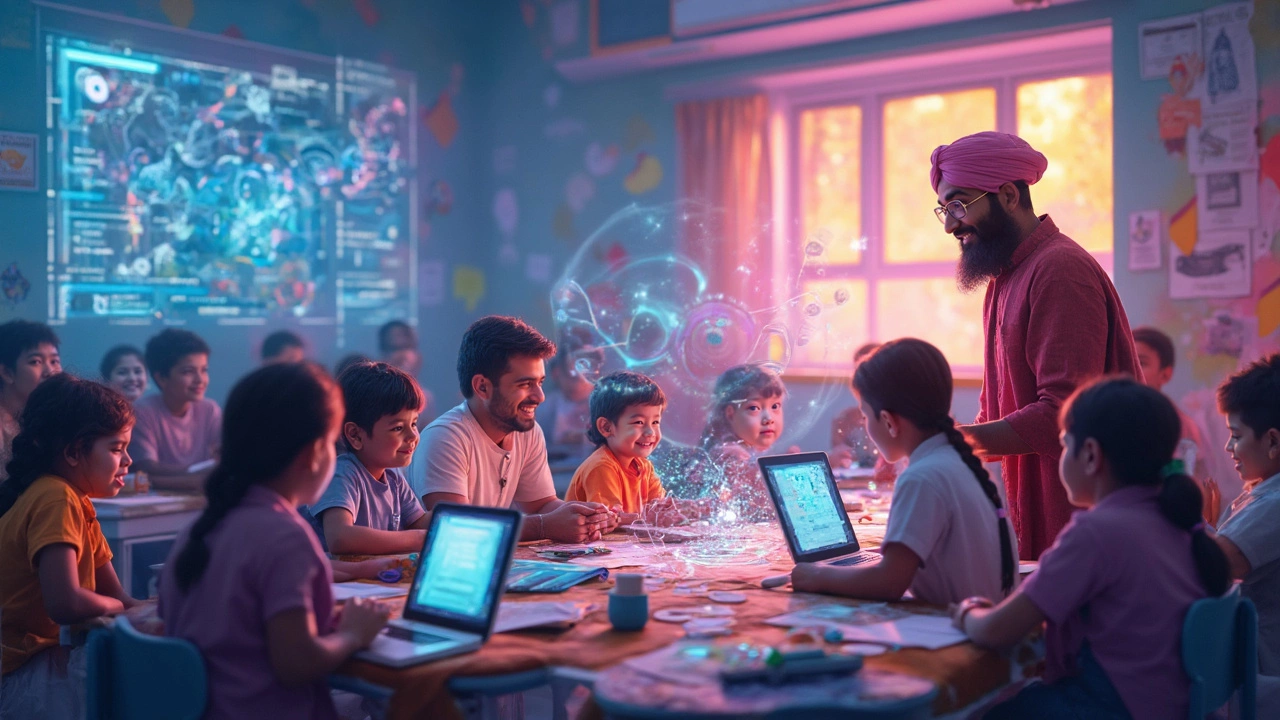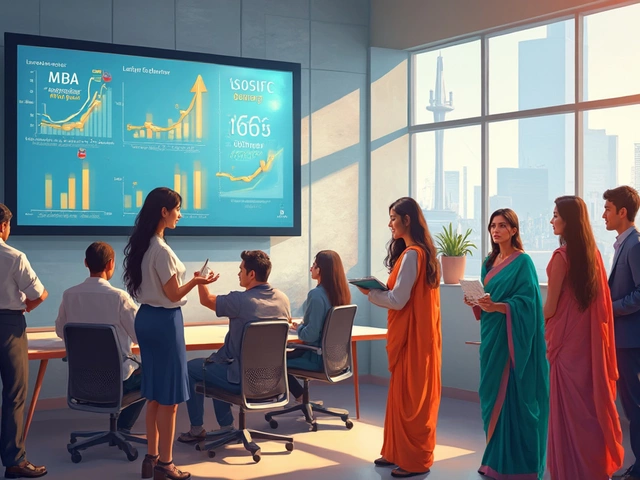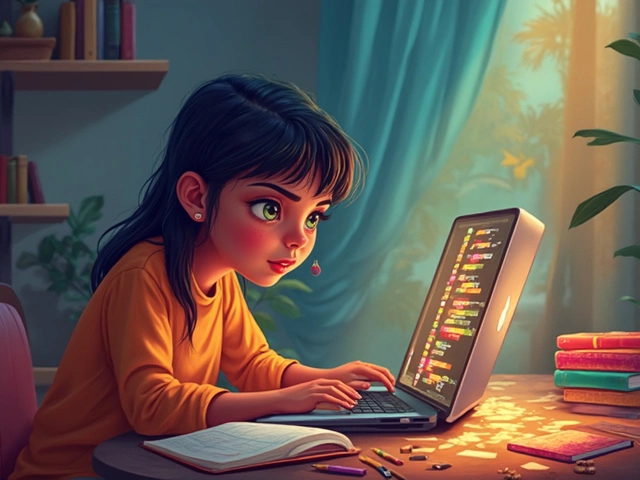
eLearning—have you heard it called something else? Maybe online education or digital learning rings a bell? It’s one of those things with almost as many names as faces. But at its heart, it’s all about learning through digital tech, bringing education to you, wherever you are.
What's in a name, though? The variety of terms reflects just how flexible and widespread eLearning is. It doesn’t change the core idea: using the internet to learn stuff. Whether it’s high school subjects, university courses, or just picking up a new skill, you’ll find a name for it—maybe even more than one.
So, why are there so many names? They each highlight a different part of the eLearning experience. Online education is basically any teaching done over the internet, while digital learning might also include tools like e-books or apps. And virtual classrooms? They try to bring the school experience straight into your living room—or wherever you're logged in from.
- Understanding eLearning
- Different Terms for Online Learning
- Benefits of eLearning
- Future of Digital Education
Understanding eLearning
So, what's eLearning all about? eLearning, or electronic learning, is basically learning that takes place over the internet. It’s a modern twist on education, making knowledge accessible no matter where you are or what time it is. This is great news for lifelong learners, busy professionals, and those living in remote areas who might not have easy access to traditional education.
Now, many folks might ask when did eLearning really start kicking off? Well, this online education trend has been around since the late 20th century, but it truly exploded in popularity in the 2000s as technology rapidly improved. Computers became household staples and reliable internet connections made it all plausible. Talk about a game-changer for everyone from students to businesses.
One of the coolest things about digital learning is its flexibility. Learners can study at their own speed, going through material as quickly or as slowly as they need to. Many eLearning platforms even offer multimedia resources like videos, quizzes, and interactive modules to keep things engaging. The idea is simple: let learners absorb information in ways that suit their personal style best.
But what makes a good eLearning platform? Well, top-notch platforms usually offer user-friendly interfaces, a diverse range of courses, and support from experts or instructors when needed. Look out for features like forums or live chats that allow you to clear up doubts and engage with peers. This type of virtual interaction can make online study feel a bit more like a classroom experience, minus the physical walls.
What's notable is how eLearning isn't just educational institutions’ playground; it's now a staple in workplaces, too. Companies use it for employee training, compliance courses, and even to build leadership skills. It saves time and cuts down costs related to travel and venue hire for seminars or workshops.
As technology advances, so does online education. VR and AR (that's virtual and augmented reality for ya) are making waves in eLearning, offering immersive experiences that can transport learners to distant lands or complex molecular structures with the right headset. This is just the beginning, with more innovative features on the horizon.
Different Terms for Online Learning
The world of eLearning isn’t just vast; it's a bit like a toolbox with each term offering its own unique spin on the digital education experience. Though they might seem interchangeable at first glance, these words tell us a lot about what’s happening behind the screen.
First up, we have online education. This is the broad umbrella term that covers any kind of educational program or course that takes place over the internet. You could be studying for a degree, enrolling in a workshop, or picking up a new skill.
Then there’s digital learning. This one often encompasses not just the lessons but the whole educational experience including the tools being used—think e-books, learning apps, and interactive simulations. It’s like having a digital library in your pocket.
Now, let’s talk about virtual classrooms. Imagine your typical classroom setup but online. The concept here is to replicate the feel of an in-person class using conferencing software or special platforms designed to host engaging, interactive sessions. It’s a blend of tech and traditional teaching methods.
You might bump into terms like blended learning too, where part of the learning happens online and part in a physical classroom. This hybrid approach is getting popular for its flexibility and effectiveness.
| Term | Characteristics |
|---|---|
| Online Education | Overall learning on the internet |
| Digital Learning | Using tech tools for education |
| Virtual Classrooms | Remote, interactive classes |
| Blended Learning | Mix of online and in-person |
Whatever you call it, eLearning is about making education accessible and engaging in today’s digital age. By understanding these terms, you're better equipped to pick the right kind of learning for your needs—or just impress your friends with your digital education knowledge!

Benefits of eLearning
Diving into the world of eLearning, there are some pretty cool perks that make it appealing for just about anyone. First off, it's super flexible. Unlike traditional education, you don't have to stick to a set schedule. You want to learn at midnight from your cozy bed? Go right ahead. eLearning lets you tailor the pace and timing to your life, not the other way around.
Cost-saving is another biggie. Imagine cutting out the commute, pricey textbooks, and even some tuition fees. Coursera reported that the cost of online education is often 50% less than its on-campus counterpart. That's serious savings!
Let’s talk reach and accessibility. Whether you're in a bustling city or a rural town, online education opens doors. "The beauty of it lies in democratizing education," says Emily Richmond of the National Education Association, emphasizing how technology brings a classroom to those who might otherwise miss out.
Here’s a quick list of why eLearning rocks:
- Personalized learning paths – You focus on what you need, and skip what you don’t.
- Updated content – Courses can adapt quickly for the latest info, unlike a dusty old textbook.
- Variety – From virtual classrooms to webinars to courses, the choices are endless.
And if we’re talking effectiveness, a study by IBM shows that online learners can actually learn five times more material in the same time because they're taking courses that fit their needs and schedules exactly.
So, whether you're looking to up your skills for a new career, learn a hobby, or just balance life and learning, digital learning offers valuable advantages. It's a glimpse into the future of education, bringing folks closer to their goals, one click at a time.
Future of Digital Education
The way we learn is changing fast, and the future of digital education looks pretty exciting. With technology developing at warp speed, eLearning is not just here to stay; it's here to revolutionize how we think about learning. More personalized, flexible, and engaging experiences are on the horizon.
Let's start with personalization. Imagine course material that adapts to your learning pace and style. Thanks to artificial intelligence, this isn’t sci-fi; it’s the future. AI-driven platforms will tailor content to meet each student's unique needs, making learning more effective and efficient.
Then there's virtual reality (VR) and augmented reality (AR). They might seem like tech buzzwords, but they're set to change the game. Picture walking through ancient ruins in history class or exploring the human body in biology—without leaving your room. VR and AR will make subjects come alive, offering immersive experiences that traditional methods can’t match.
Interactive tools are getting better too. Tools like gamification will make online courses more engaging, turning learning into a journey rather than a chore. Badges, leaderboards, and rewards can motivate learners and make the process more fun.
Accessibility is another biggie. As more content goes online, barriers for people with disabilities are breaking down. From speech-to-text functionalities to customizable interfaces, eLearning is getting more inclusive.
And let's not forget the global classroom. With digital learning, borders don’t matter anymore. A student in Brazil can learn from a lecturer in Finland. This kind of cross-cultural exchange enriches education, broadening horizons and fostering more global understanding.
If you're a teacher, tech will become your best friend. Automated grading, real-time feedback, and analytics tools will free up time for what matters most—teaching. You can focus on creating more meaningful interactions with students instead of getting bogged down by admin tasks.
As we look ahead, it’s clear that digital learning is not just reshaping education but making it more accessible, engaging, and tailored to each learner. Whether you’re a student or an educator, the future is paved with opportunities to connect and grow in unprecedented ways.




